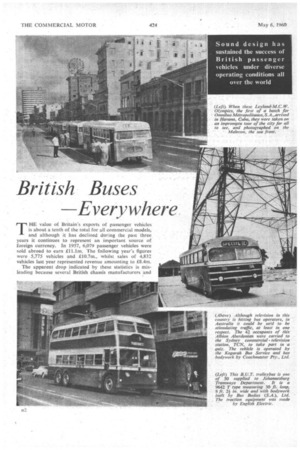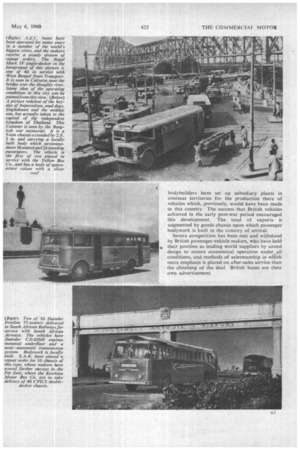British Buses —Everywhere
Page 116

Page 117

If you've noticed an error in this article please click here to report it so we can fix it.
THE value of Britain's exports of passenger vehicles is about a tenth of the total for all commercial models, and although it has declined during the past three years it continues to represent an important source of foreign currency. In 1957, 6,079 passenger vehicles were sold abroad to earn 211.1m. The following year's figures were 5,775 vehicles and £10.7m., whilst sales of 4,832 vehicles last year represented revenue amounting to .£8.4m.
The apparent drop indicated by these statistics is misleading because several British chassis manufacturers and bodybuilders have set up subsidiary plants in overseas territories for the production there of vehicles which, previously, would have been made in this country. The success that British vehicles achieved in the early post-war period encouraged this development. The total of exports is augmented by goods chassis upon which passenger bodywork is built in the country of arrival.
Severe competition has been met and withstood by British passenger-vehicle makers, who have held their position as leading world suppliers by sound design to ensure economical operation under, all conditions, and methods of salesmanship in which more emphasis is placed on after-sales service than the clinching of the deal. British buses are their own advertisement.




































































































































































































































































